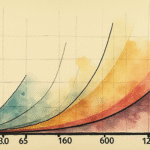Introduction
In recent months, I’ve delved into Mexico’s history from the 1920s and 1930s, a period marked by significant political upheaval. This era saw U.S. President Woodrow Wilson’s refusal to diplomatically recognize the Mexican president, Adolfo de la Huerta, who had ascended to power through violence following the assassination of President Venustiano Carranza. Wilson’s government not only withheld recognition but also demanded Mexico acknowledge existing concessions to U.S. businessmen, as outlined in the newly ratified 1917 constitution. Senator Albert B. Fall went further, advocating for the repeal of Article 27.
Historical Context and Implications
This historical stance by Wilson’s administration had severe consequences. Mexico was barred from securing loans from U.S. banks and procuring arms and ammunition, crucial for settling post-revolution debts and rearming the nation. This pattern of pressure from U.S. presidents persisted, as evidenced by the 1986-2001 drug certification program, where the U.S. threatened to withhold financial and technical support if Mexico failed to cooperate in the fight against drug trafficking.
Trump’s Trade Policies: A Modern Parallel
While the recent administration under President Trump may seem more brash, it continues a long-standing tradition of exerting pressure on Mexico. Trump’s proposed tariff revisions echo past policies, essentially saying, “comply with my terms or face penalties.”
Current Challenges: The T-MEC Negotiations
The ongoing renegotiation of the USMCA (United States-Mexico-Canada Agreement) presents new challenges. Reports suggest that the Trump administration may demand changes to constitutional articles governing PEMEX and CFE, which the left-leaning Morena party views as significant victories. Mexico finds itself at a political crossroads, balancing between Washington’s demands and pressures from within Trump’s own party.
Mexico’s Economic Future: Diversification vs Integration
For years, experts have advocated for Mexico to diversify its export markets to reduce dependence on the U.S., which currently absorbs 84% of Mexico’s exports, according to BBVA Research data for 2024. A more radical approach would involve embracing a transnational economic community, potentially sacrificing some national sovereignty for deeper integration.
Key Questions and Answers
- What was the historical context of U.S.-Mexico trade tensions? The tensions can be traced back to the early 20th century, with U.S. presidents like Woodrow Wilson applying pressure on Mexico through diplomatic recognition withholds and financial sanctions.
- How have these historical patterns persisted? These patterns have continued, as seen in the drug certification program under the Reagan and subsequent administrations.
- What challenges does Mexico face in its current trade negotiations? The renegotiation of the USMCA presents Mexico with demands that could impact constitutional autonomy and face opposition from domestic political factions.
- What are the potential economic strategies for Mexico’s future? Mexico could diversify its export markets or pursue deeper economic integration through a transnational community, balancing national sovereignty with the benefits of economic cooperation.






